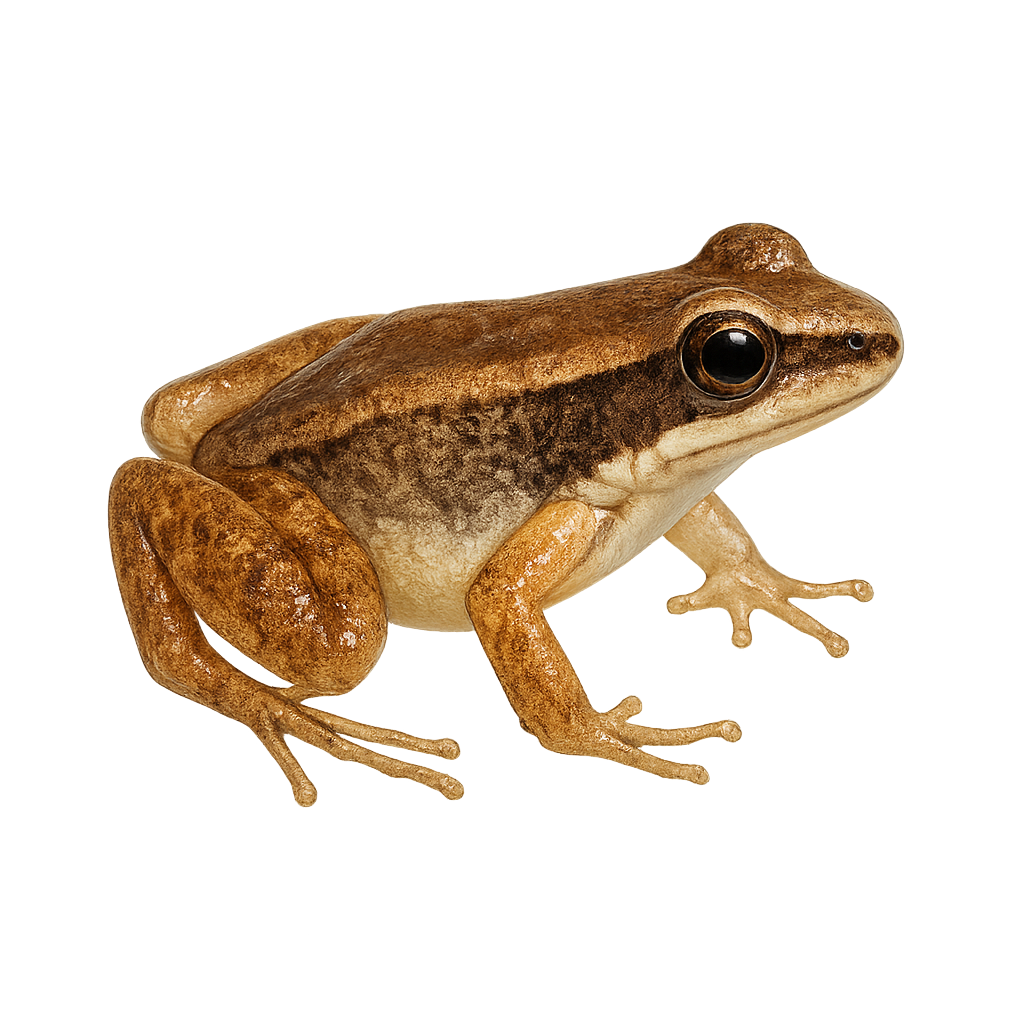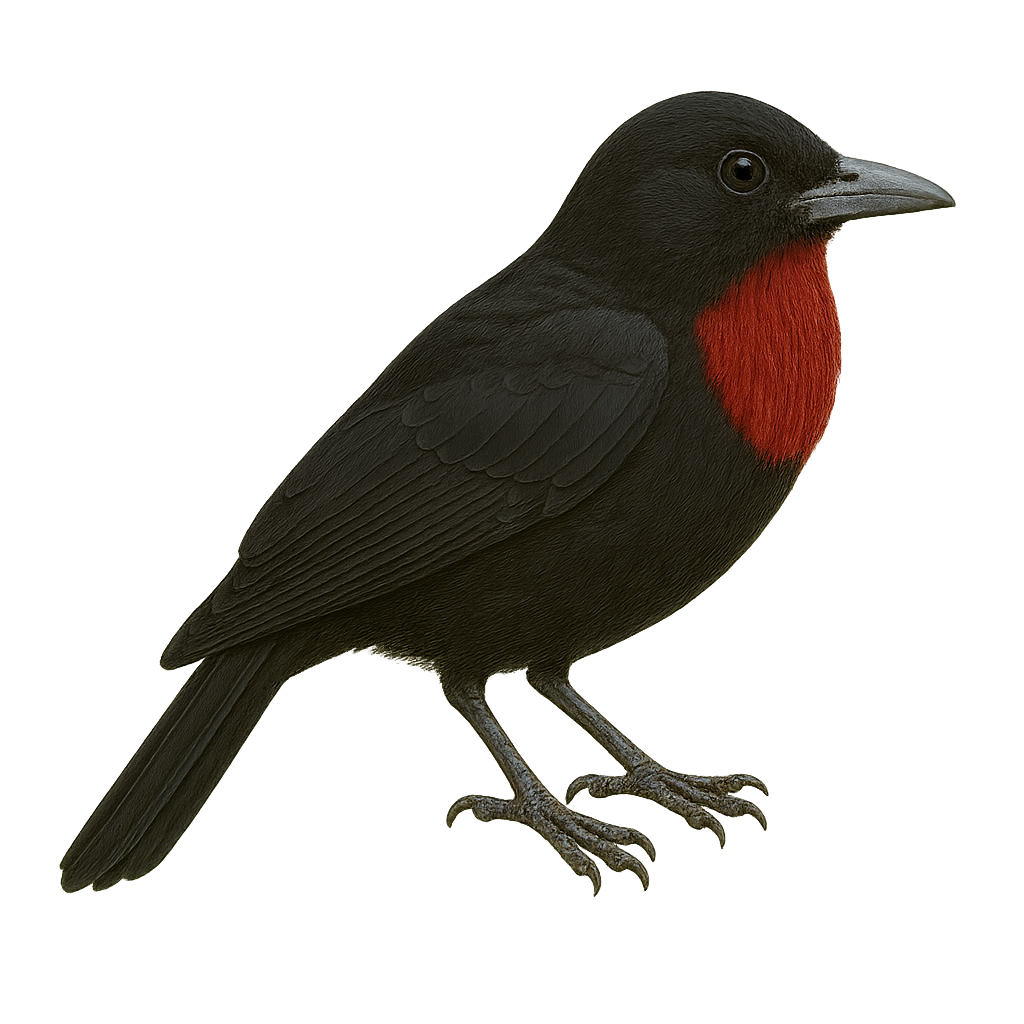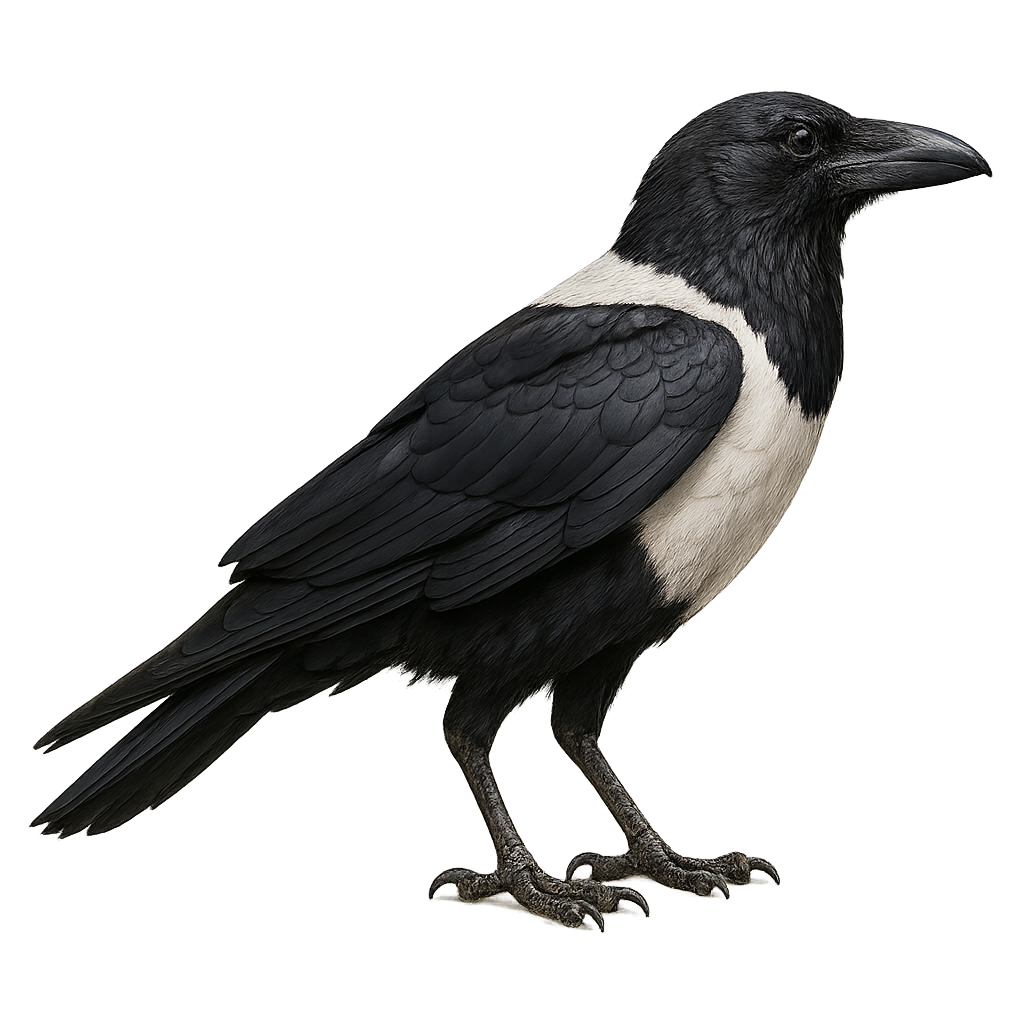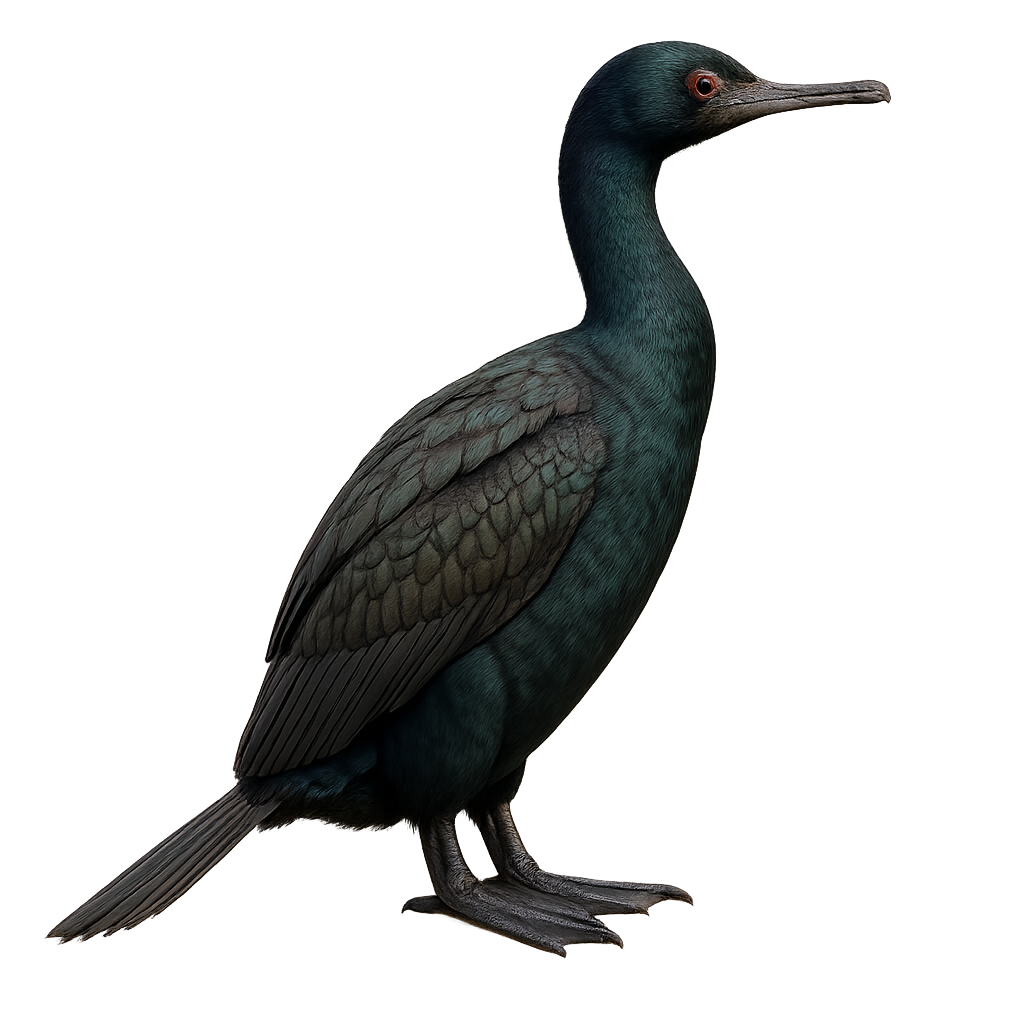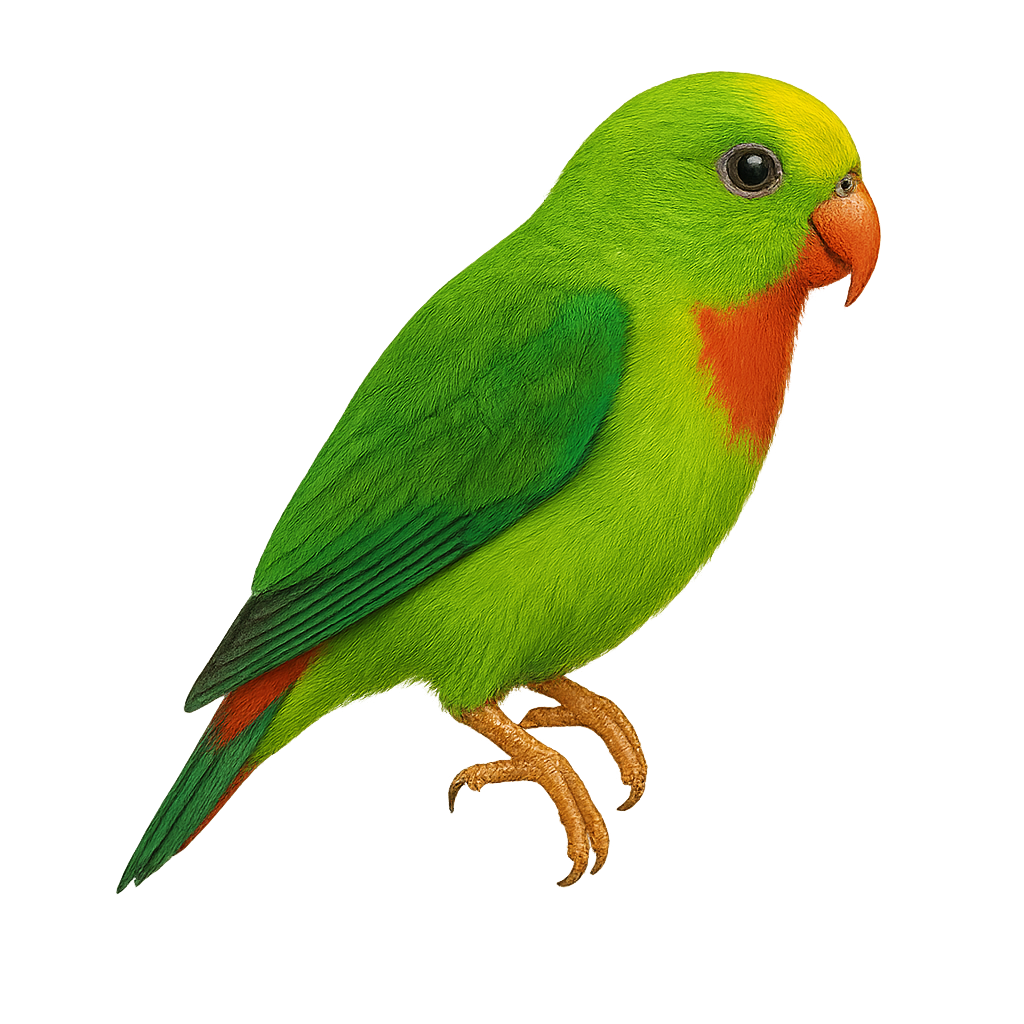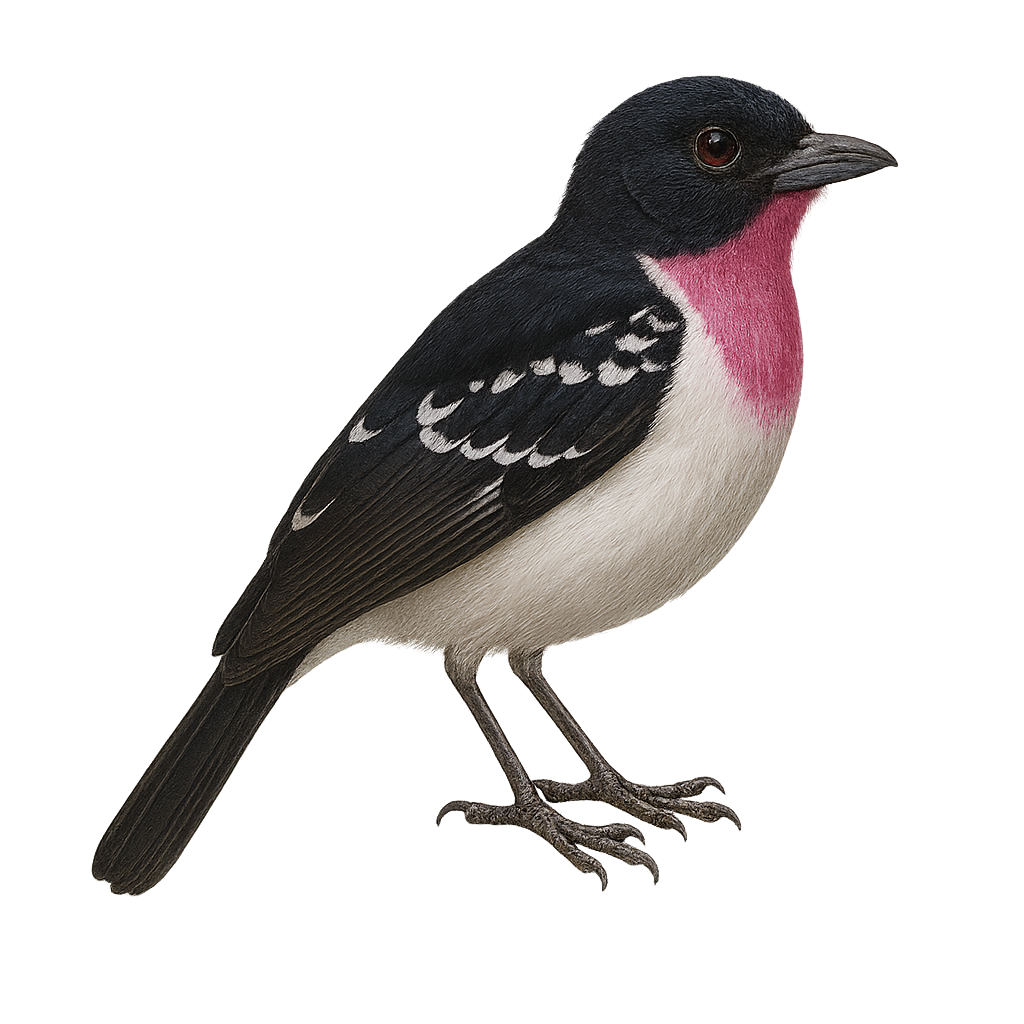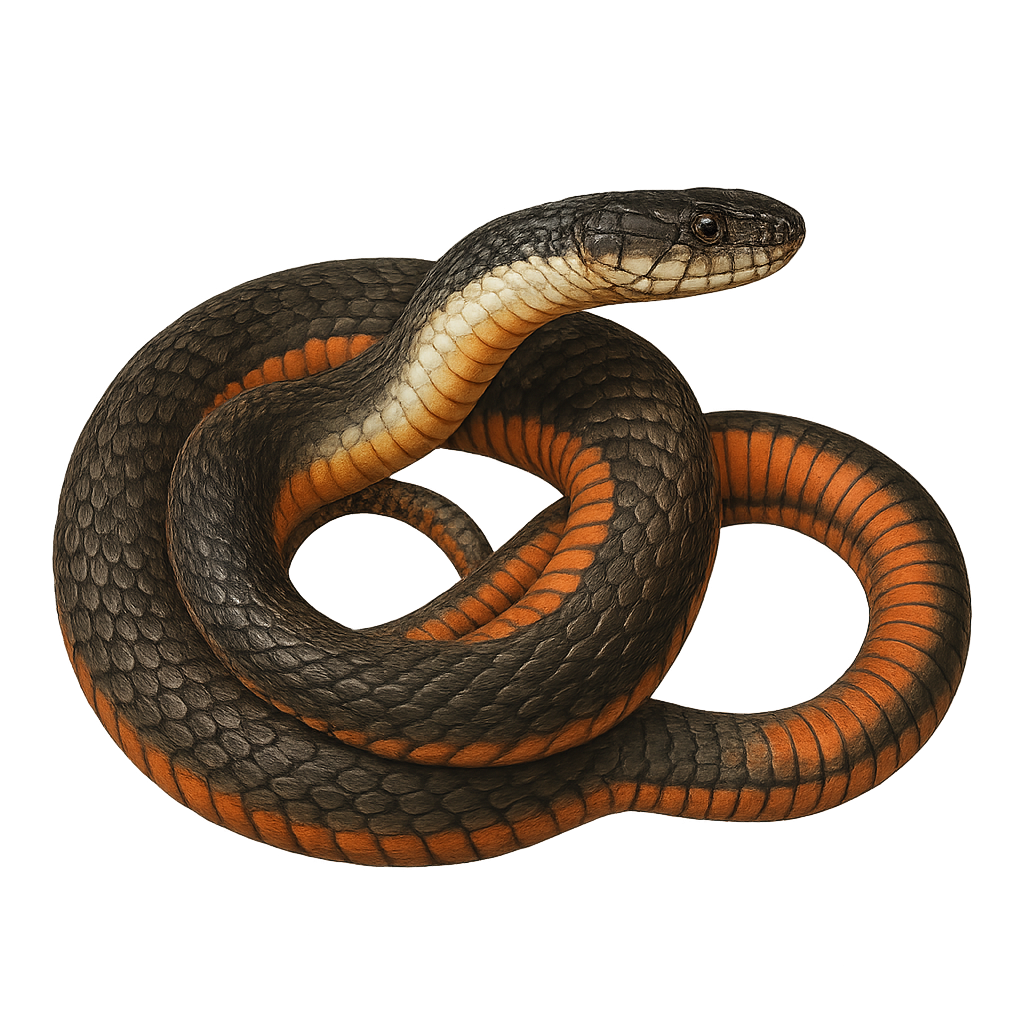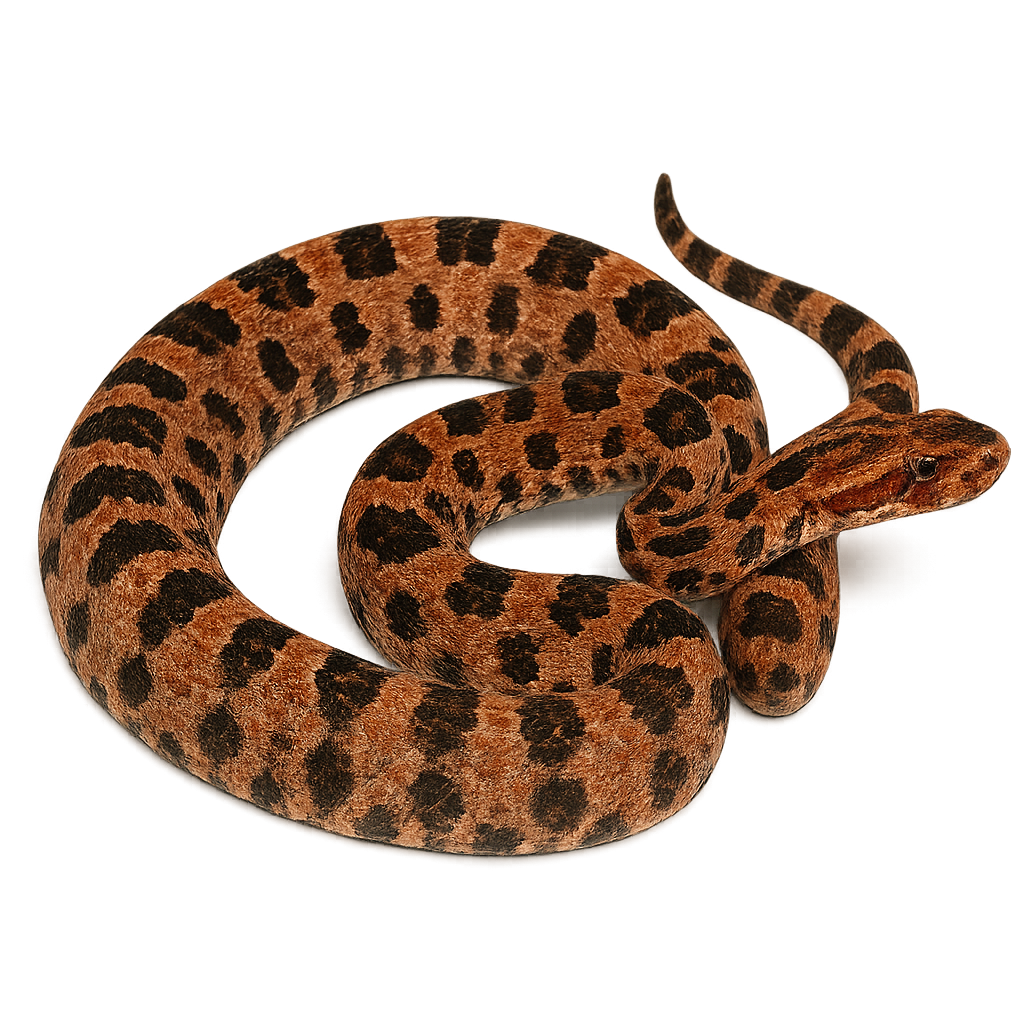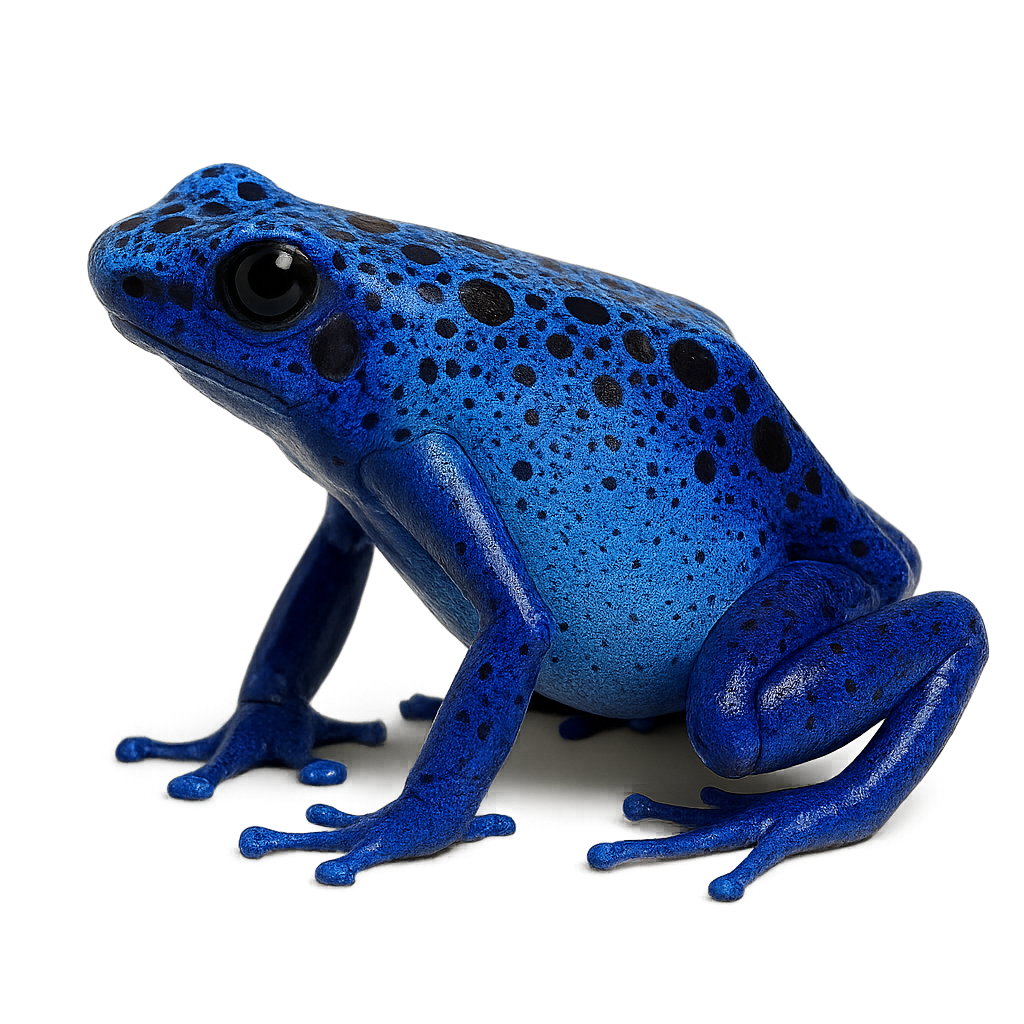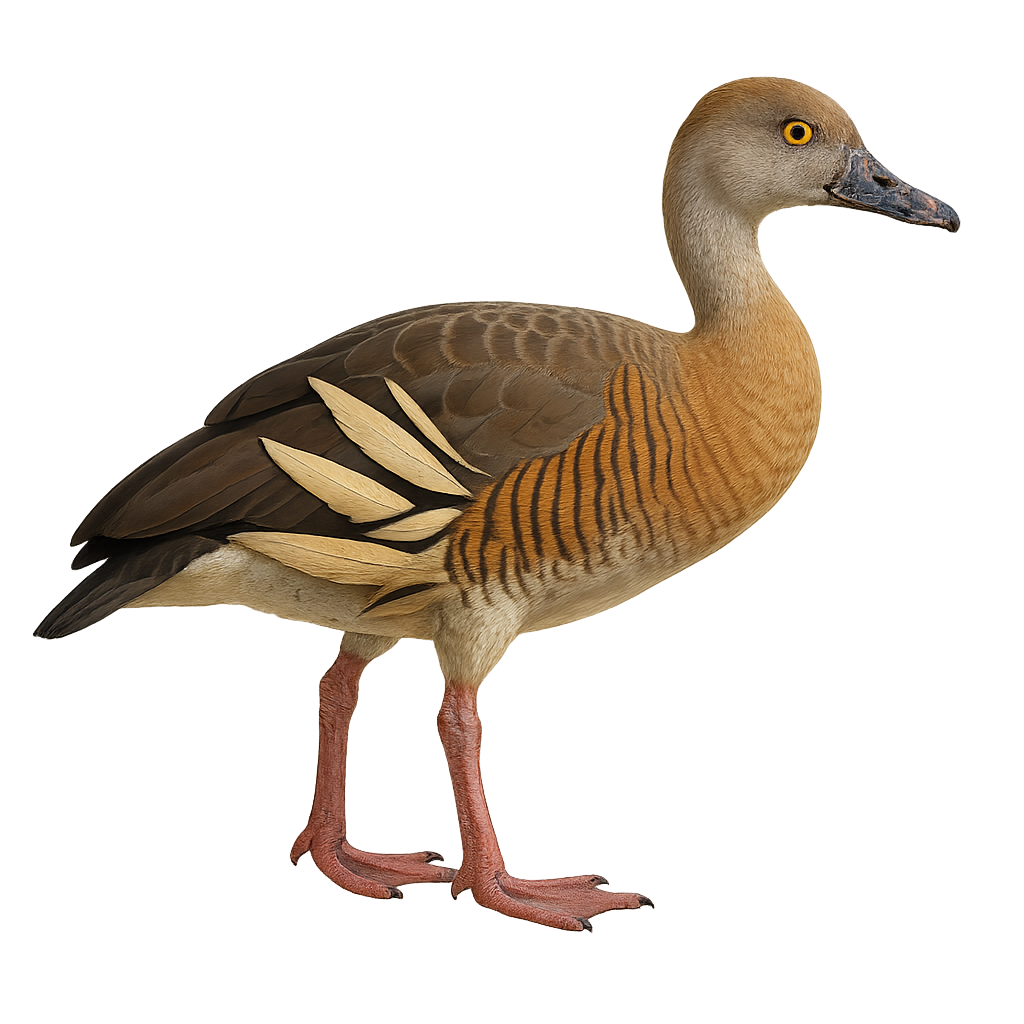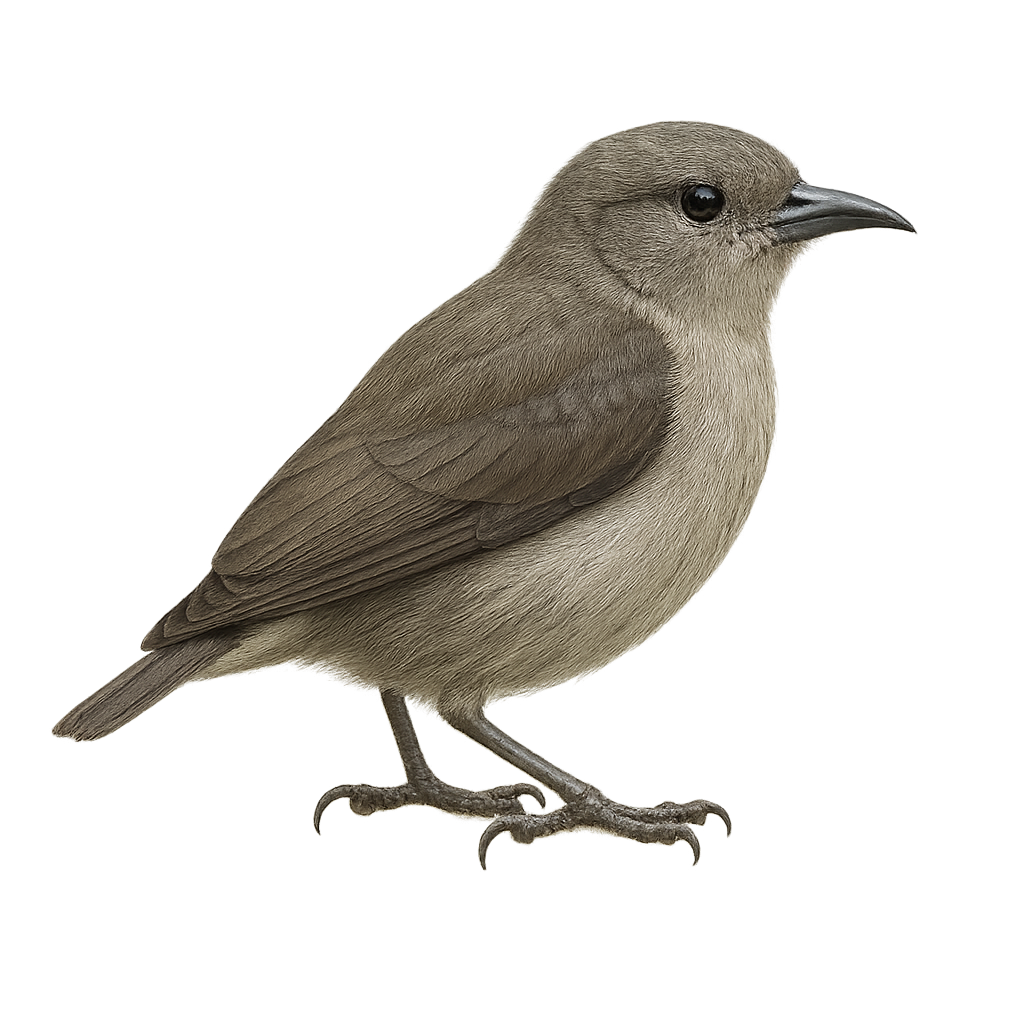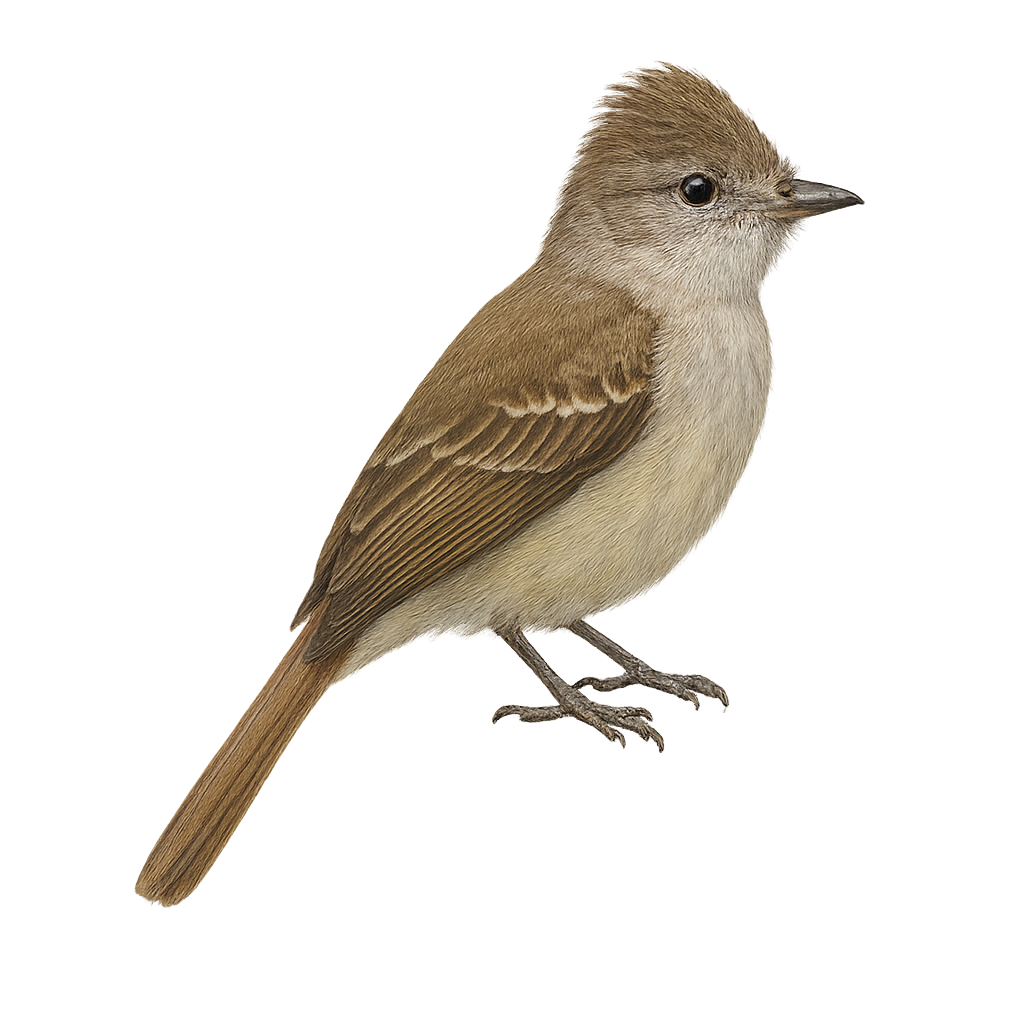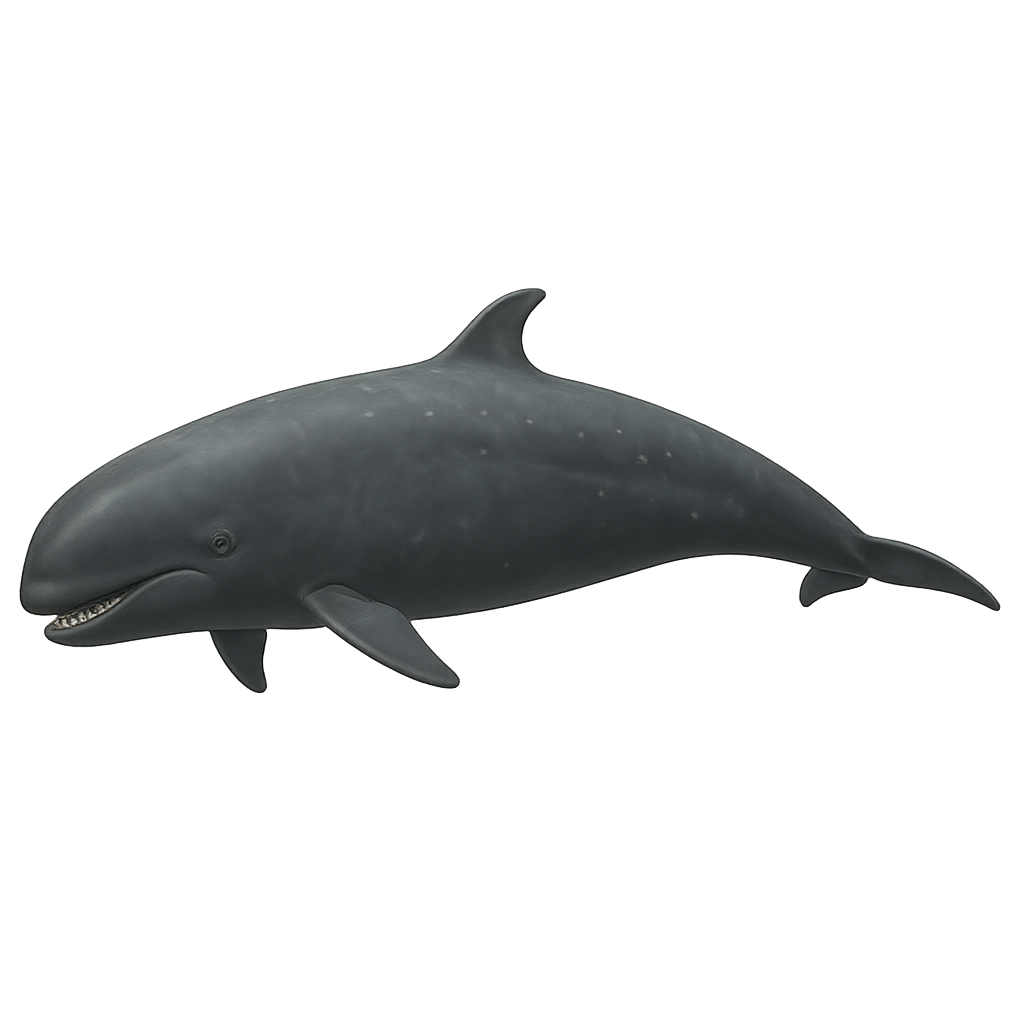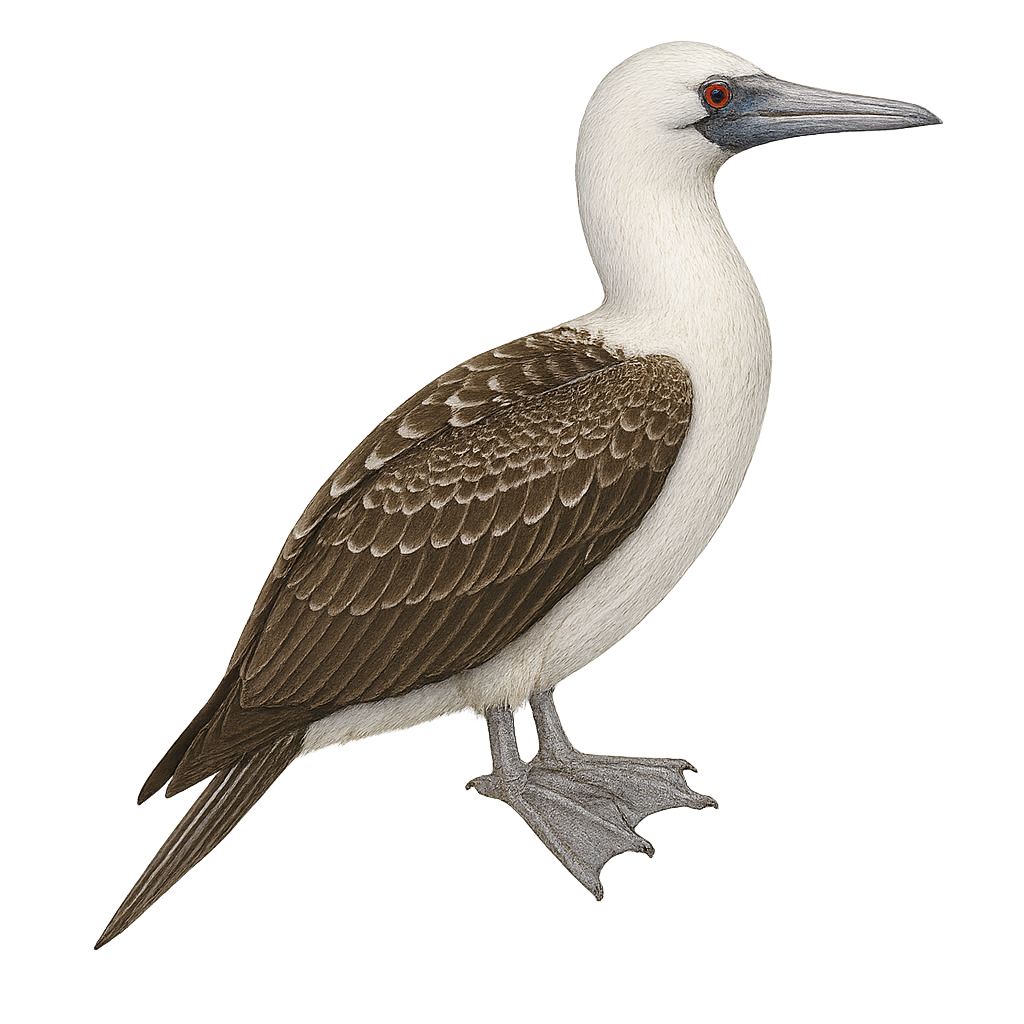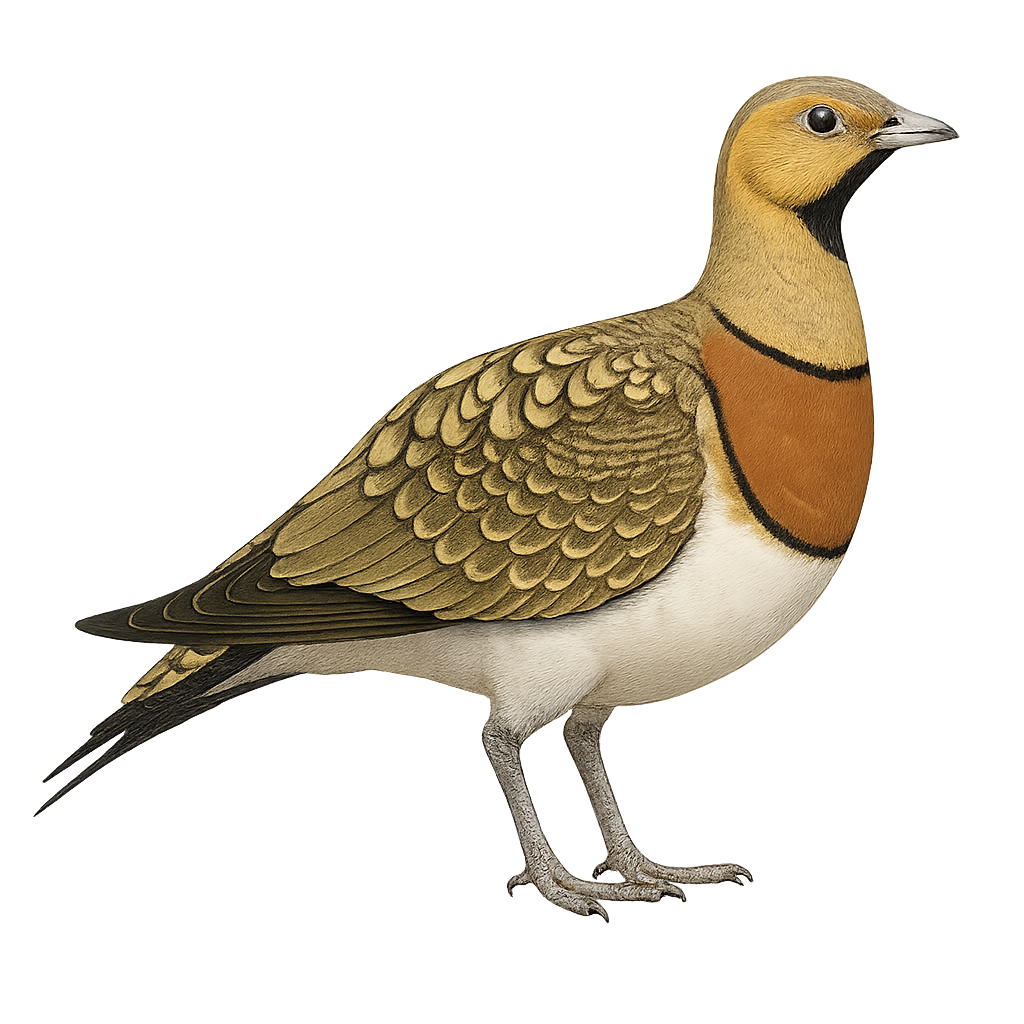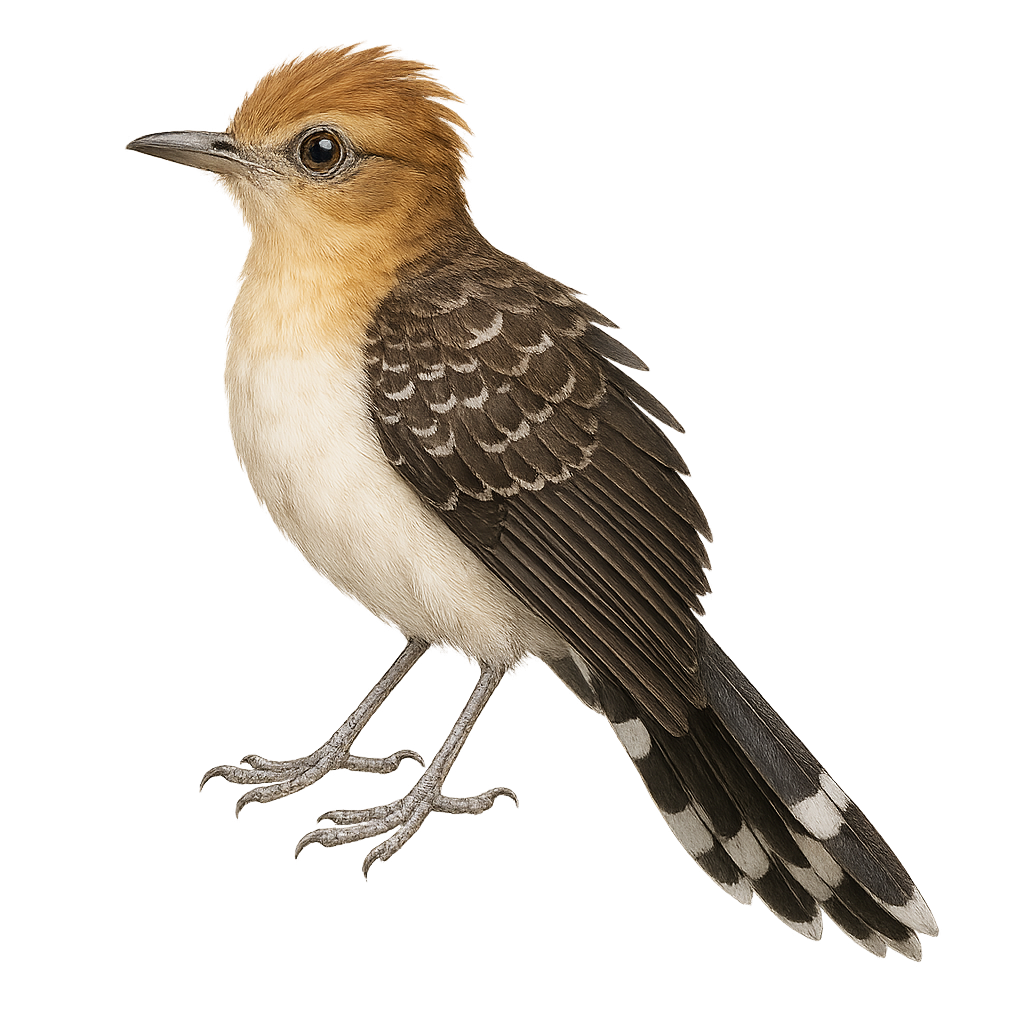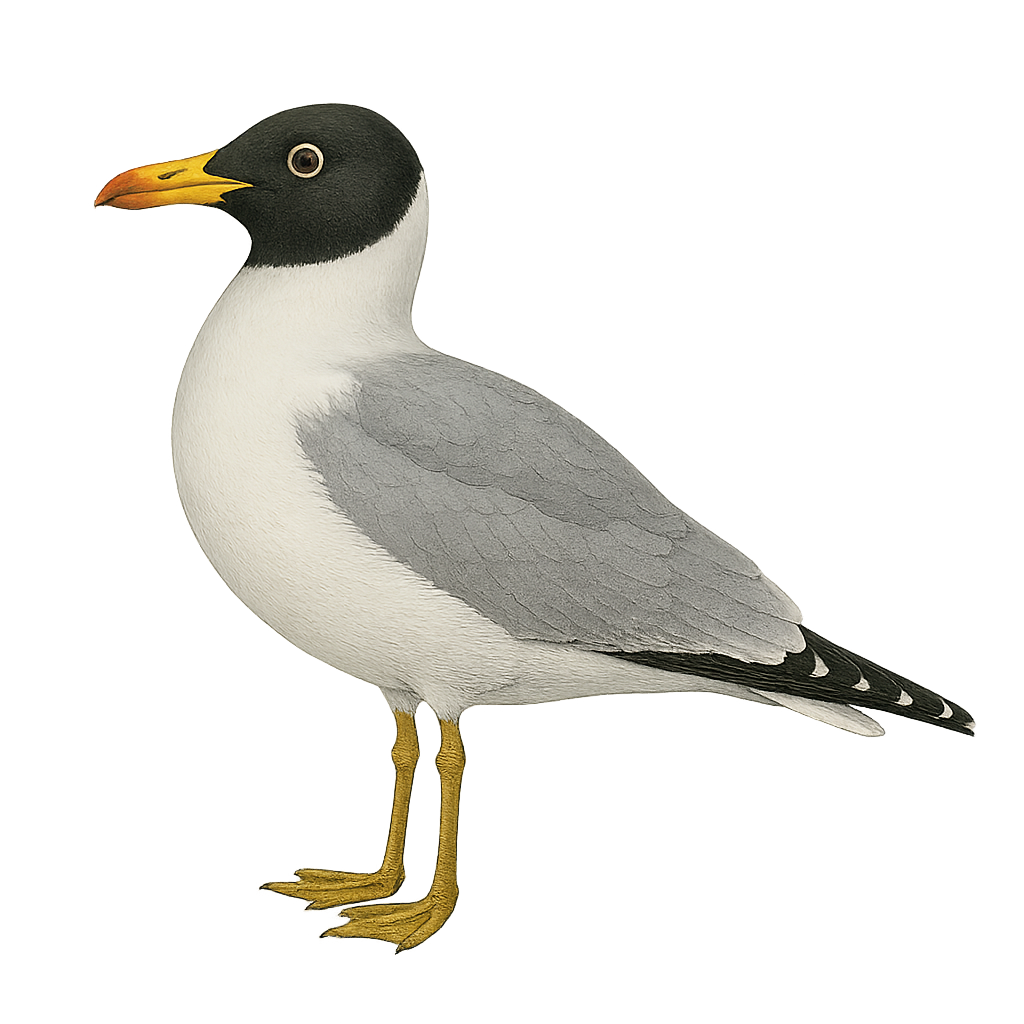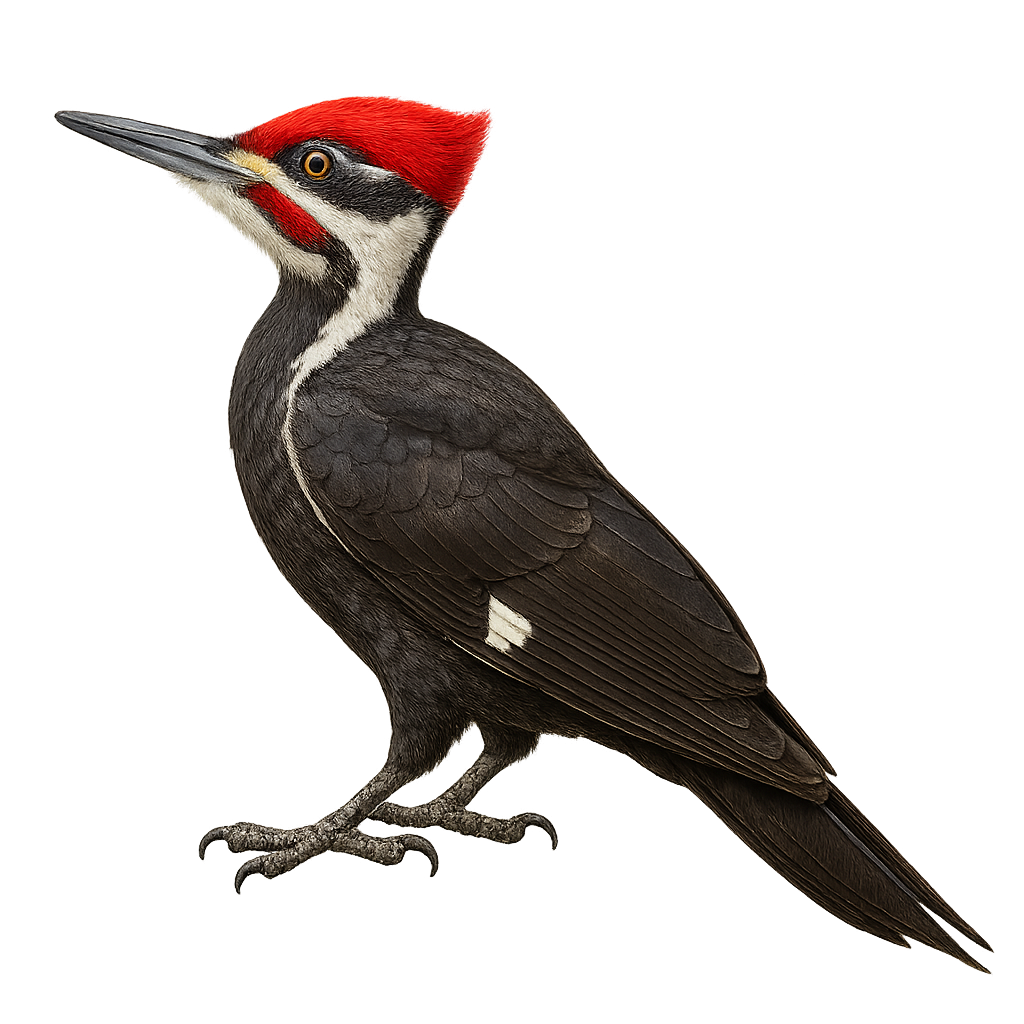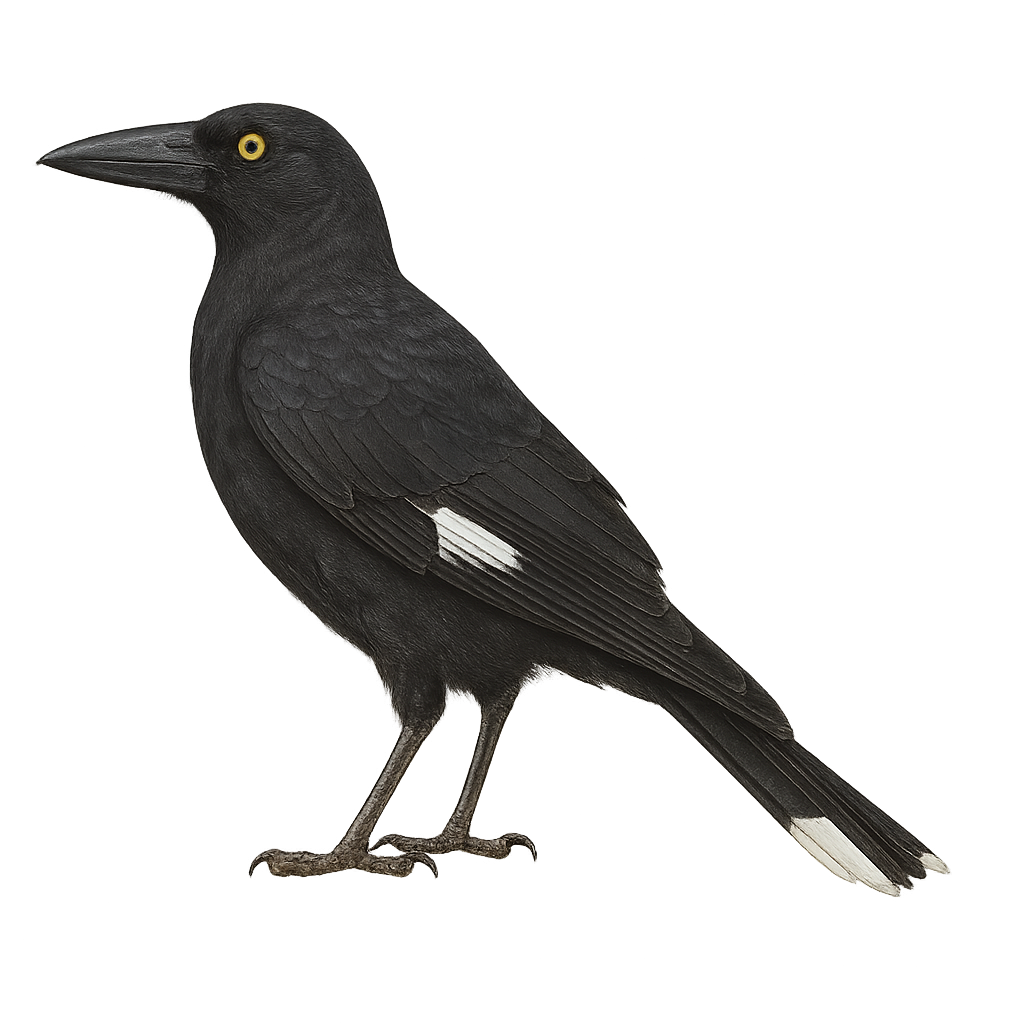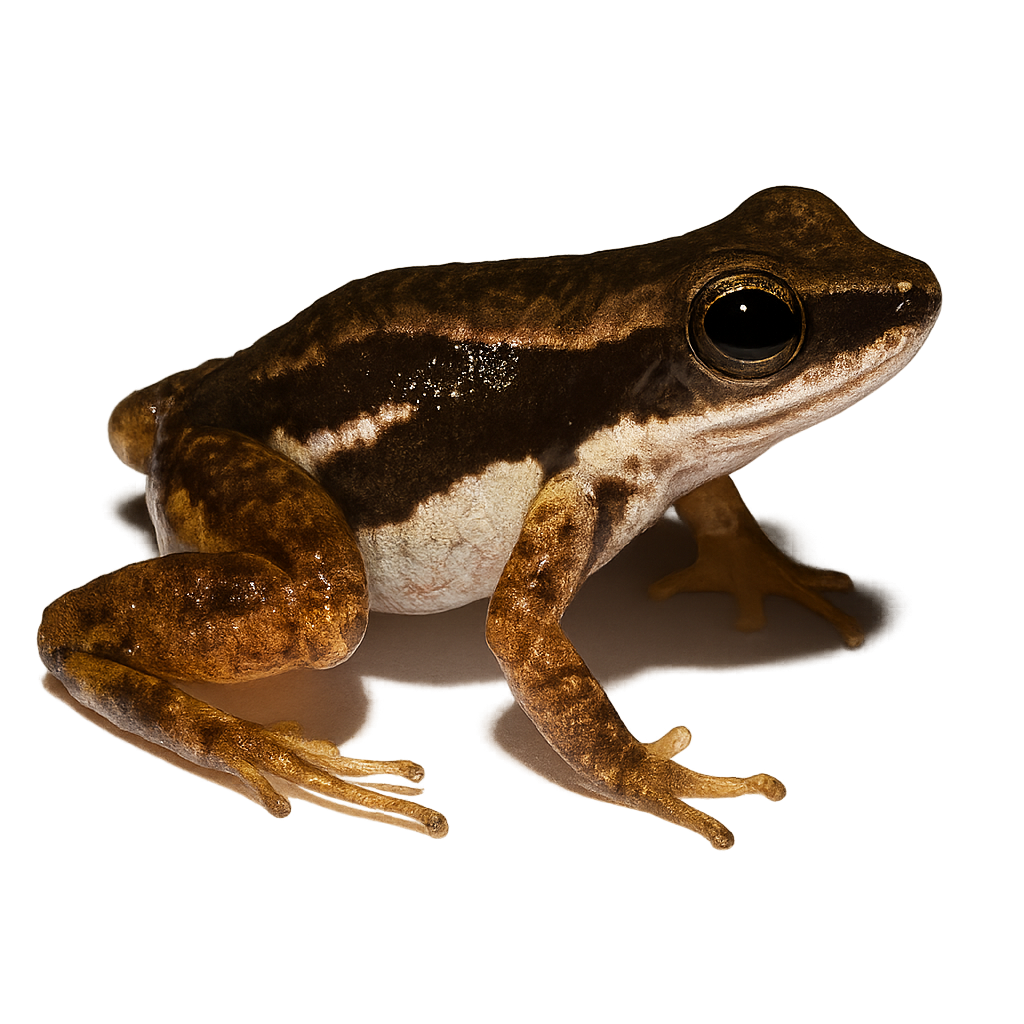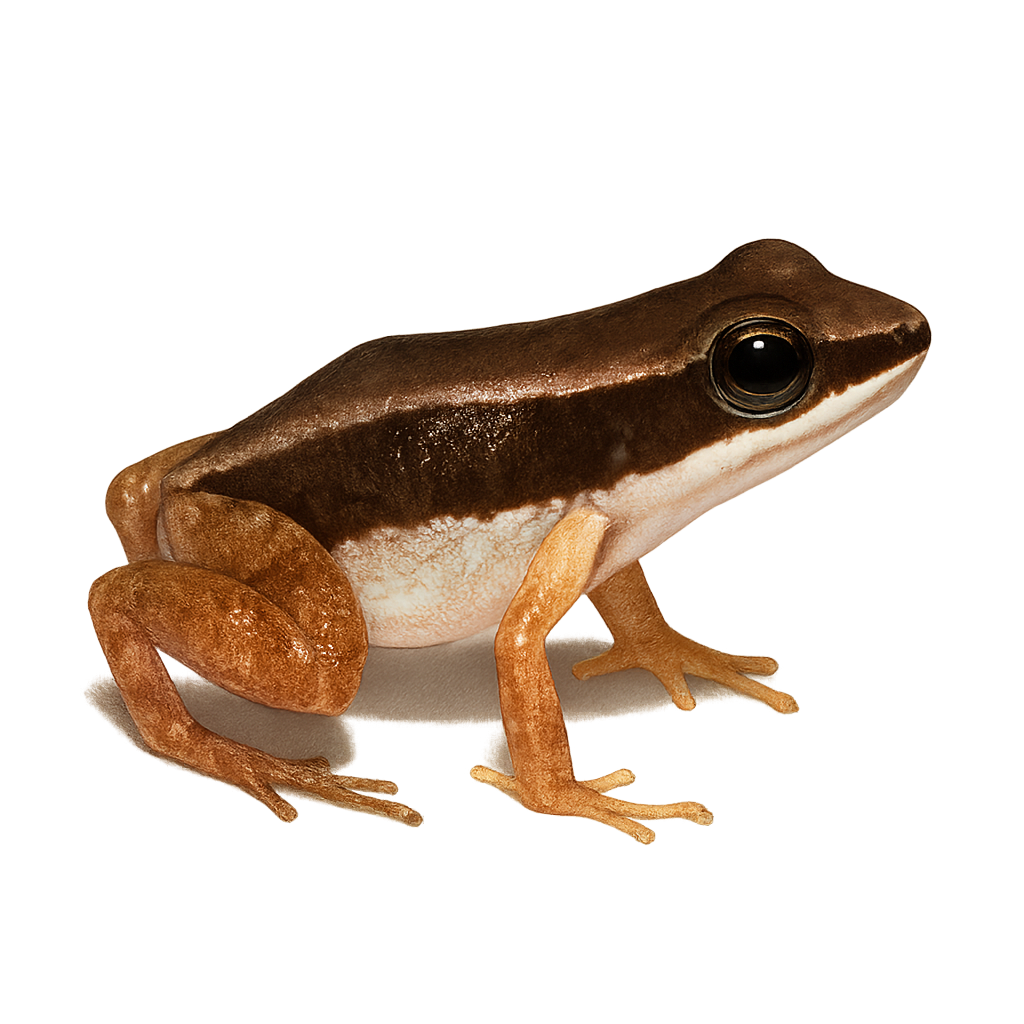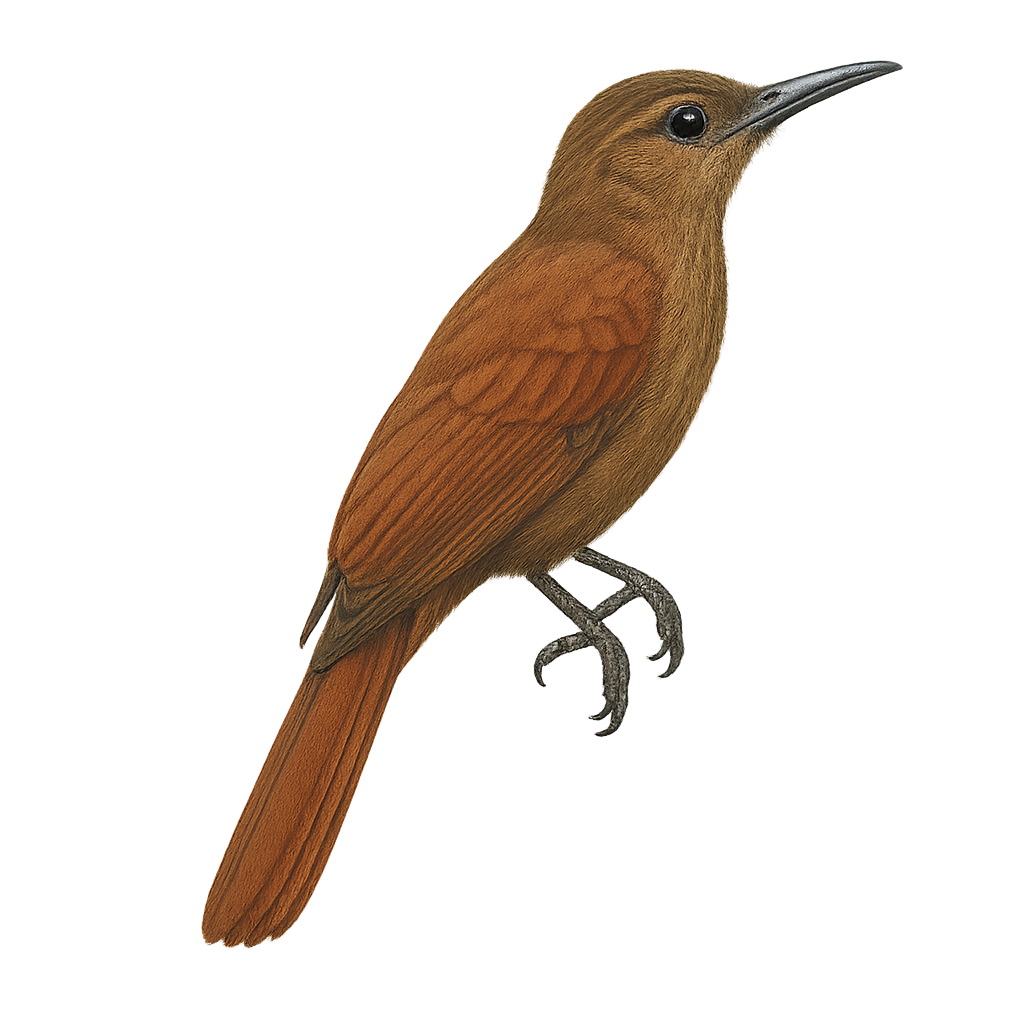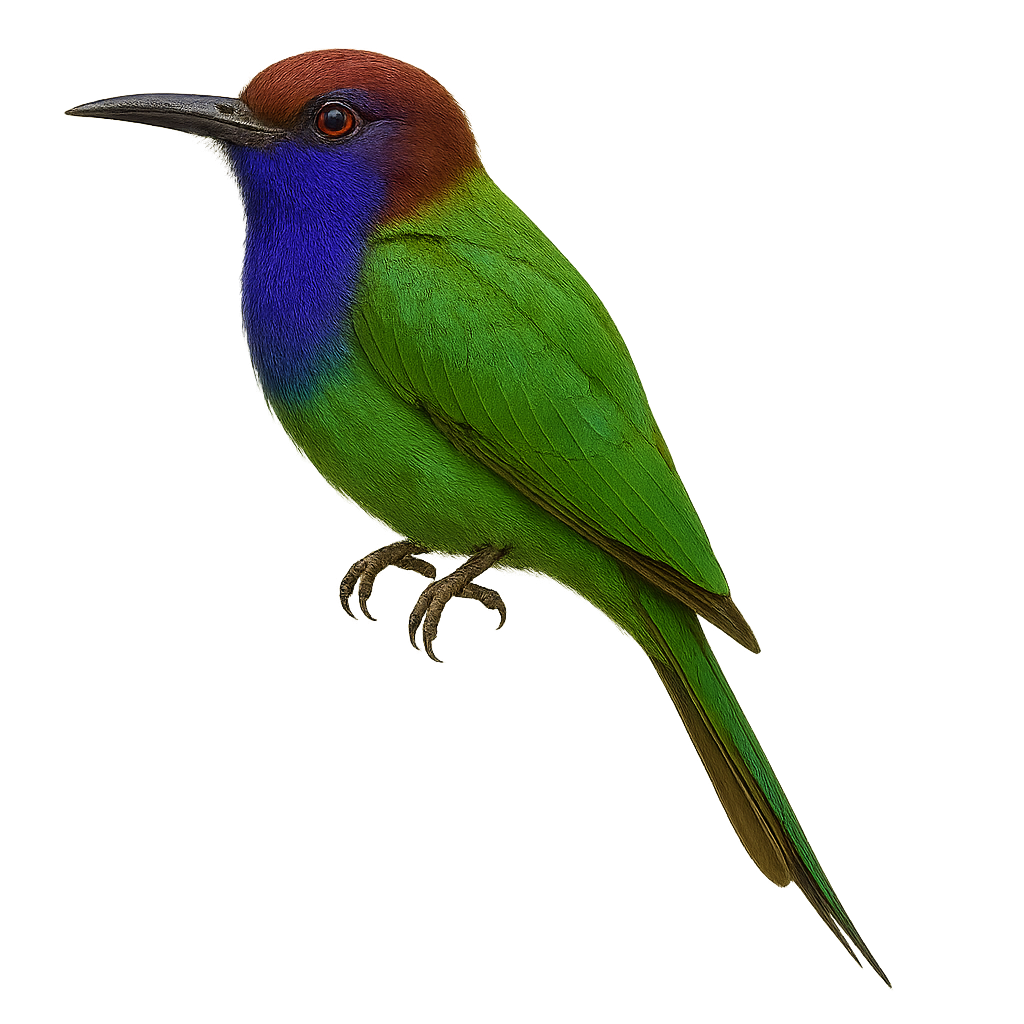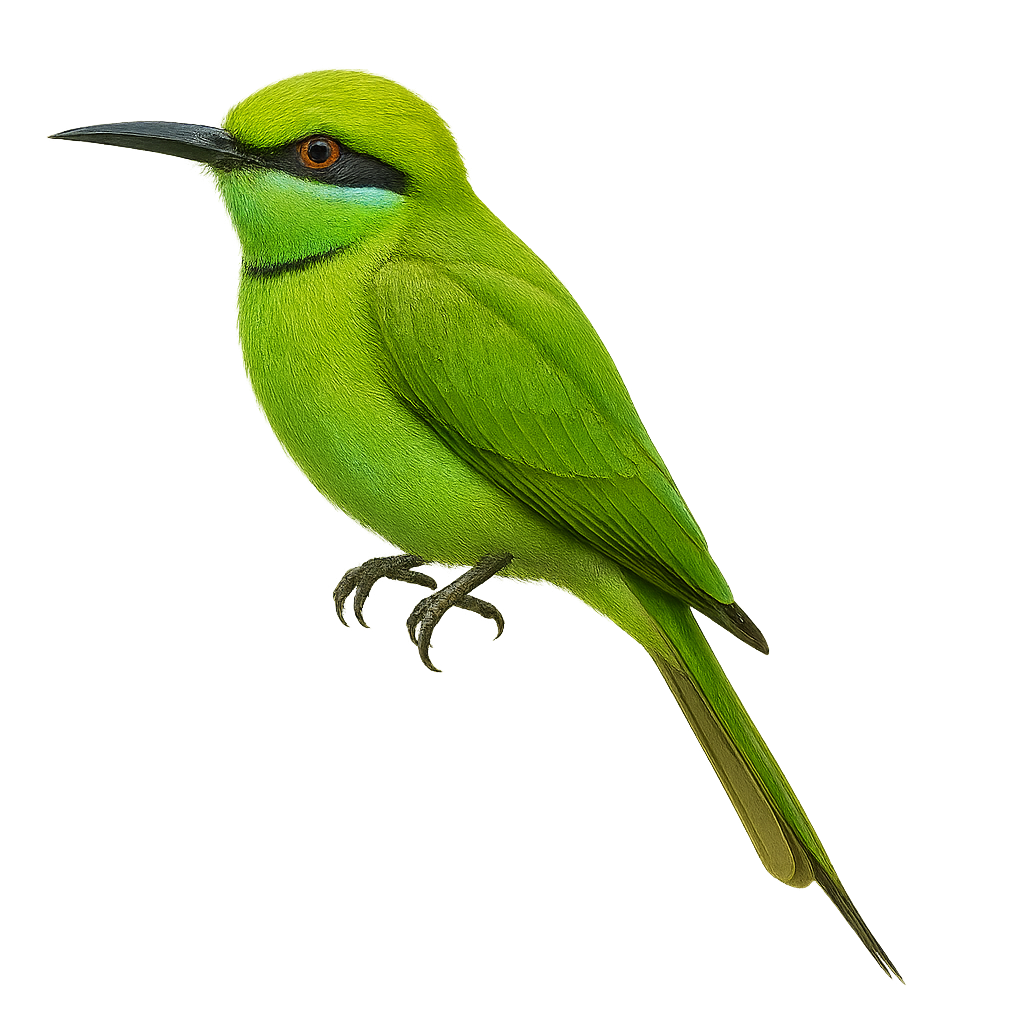The Palm rocket frog is a small, colorful frog native to the humid tropical forests of South America, particularly in Colombia and Ecuador. It is characterized by its smooth skin and vibrant color patterns, ranging from brown to green with black spots. This species is primarily terrestrial, although it is often found near water bodies where it breeds. Males are known for their distinctive calls, which play a crucial role in attracting females. The Palmate Rocket Frog is diurnal, meaning it is active during the day. It primarily feeds on small insects and other invertebrates. Although its population is stable, it is threatened by deforestation and habitat loss.
The Purple-throated Fruitcrow is a fascinating bird found in the tropical forests of Central and South America. It is distinguished by its glossy black plumage and striking purple throat, giving it a majestic appearance. This bird measures about 28 cm in length and primarily feeds on fruits, but it can also consume insects. The Purple-throated Fruitcrow lives in family groups and is often seen performing acrobatic flights through the canopy. It plays an important role in seed dispersal, aiding in forest regeneration. Although its habitat is threatened by deforestation, it is currently classified as Least Concern by the IUCN.
The Pied Crow, Corvus albus, is a medium-sized bird easily recognized by its distinctive black and white plumage. Its head, wings, and tail are black, while its neck and chest are bright white. This striking contrast makes it unique among corvids. It is widespread in sub-Saharan Africa, adapting to various habitats, from savannas to urban areas. An opportunist, it feeds on a variety of foods, from insects to human waste. Its intelligence and problem-solving abilities are remarkable, typical characteristics of crows. Sociable, it often forms noisy groups, communicating through a series of harsh calls.
The Pelagic Cormorant, Urile pelagicus, is a medium-sized seabird known for its glossy black plumage with green and purple sheens. It has a long neck and a slender, hooked bill, perfect for catching fish. This bird is commonly found along the rocky coasts of the North Pacific, from Alaska to California. It nests on steep cliffs, often in colonies, and feeds mainly on fish and small marine invertebrates. Although generally solitary outside the breeding season, it can be seen in small groups while hunting. Its flight is fast and direct, with regular wing beats.
The Philippine Hanging Parrot, or Loriculus philippensis, is a small, vibrantly colored parrot endemic to the Philippines. Measuring about 14 cm in length, it is characterized by its bright green plumage, a red patch on the forehead, and a short tail. Males and females are similar, although males often have brighter colors. These birds primarily inhabit tropical rainforests but can also be found in plantations and gardens. They are known for their acrobatic behavior, often hanging upside down to feed on fruits, flowers, and nectar. Their song is a mix of whistles and chirps.
The Porphyrolaema porphyrolaema is a fascinating bird belonging to the Cotingidae family. It is distinguished by its glossy black plumage and striking purple throat, giving it a majestic appearance. This bird is primarily found in the humid tropical forests of South America, where it feeds mainly on fruits and insects. It is often seen in small groups, making it easier to spot. Although its behavior is generally suspicious, it can be tolerant of discreet observers. Its breeding period is still poorly understood, but protecting its habitat is essential for its survival.
The Nerodia erythrogaster, commonly known as the plain-bellied water snake, is a non-venomous aquatic snake found primarily in the southeastern United States. It is recognizable by its reddish or orange belly, contrasting with its typically brown or dark gray back. Measuring between 60 and 120 cm in length, it is often seen near freshwater bodies such as marshes, rivers, and lakes. Although primarily aquatic, it can also be found on land, especially when basking in the sun. It primarily feeds on fish and amphibians. Its breeding season occurs in spring, and it gives birth to live young, usually between July and September.
The Sistrurus miliarius, commonly known as the pygmy rattlesnake, is a small venomous snake, typically measuring between 40 and 60 cm. It is recognizable by its varied coloration, ranging from gray to brown, with diamond-shaped or banded patterns. Its head is triangular, and it has a small rattle at the end of its tail, although this is often less noisy than that of other rattlesnakes. It is primarily found in the southeastern United States, inhabiting diverse environments such as pine forests, marshes, and grasslands. Although venomous, its bites are rarely fatal to humans but still require immediate medical attention.
The Dendrobatidés, belonging to the Dendrobatidae family, is a small frog known for its bright colors and toxic behavior. These frogs typically measure between 2 and 6 centimeters in length and are easily recognizable by their shiny, colorful skin, which can be yellow, blue, red, or green, depending on the species. They are primarily found in the humid tropical forests of Central and South America. Their diet consists of insects, small arthropods, and occasionally small worms. Dendrobatidéss are known for their toxic secretions, which serve as defense against predators. These toxins mainly come from their diet, particularly ants and beetles that contain alkaloids. Dendrobatidéss are also both terrestrial and aquatic creatures, typically laying their eggs in humid places, where their tadpoles develop in small pools of water or decaying leaves. Although fascinating, Dendrobatidéss are vulnerable to habitat loss due to deforestation and pollution.
The Phantasmal Poison Frog, or Epipedobates tricolor, is a small, brightly colored frog native to the humid tropical forests of Ecuador. Known for its vivid colors ranging from red to green and yellow, it uses these hues as a warning to potential predators of its toxicity. This diurnal species primarily feeds on small insects and is often seen on the forest floor, where it blends in with the fallen leaves. Despite its small size, it plays a crucial role in the ecosystem by controlling insect populations. Unfortunately, it is threatened by deforestation and habitat loss.
The Plumed Whistling Duck is a medium-sized waterfowl, easily identified by its light brown plumage with darker feathers on the back and wings. It has a lighter head and neck, often with a pinkish hue, and a grey bill. Its legs are long and grey-blue. This duck is often seen in flocks, feeding on seeds and aquatic plants. It is primarily nocturnal, spending its days resting in shaded areas near water. Found mainly in Australia, it inhabits marshes, lakes, and rivers. Although generally tolerant of human presence, it can become wary if disturbed.
The Plain Flowerpecker, scientifically known as Dicaeum concolor, is a small passerine bird belonging to the Dicaeidae family. It is primarily found in the tropical and subtropical regions of South and Southeast Asia, including India, Sri Lanka, Thailand, and Malaysia. This bird measures about 9 to 10 cm in length and is characterized by its modest plumage, usually gray-olive, which allows it to blend into its surroundings. The Plain Flowerpecker feeds mainly on small fruits, nectar, and insects, playing a crucial role in pollination and seed dispersal. It is often seen in small groups or pairs, actively moving through the forest canopy and gardens.
The Pelzeln's Elaenia is a small passerine bird belonging to the Tyrannidae family. It is primarily found in the tropical and subtropical humid forests of South America, particularly in Brazil, Colombia, and Venezuela. This bird is characterized by its olive-green plumage on the back and lighter underparts, with a subtle crest on its head. It is often seen feeding on insects and fruits in the canopy. Although its song is discreet, it plays an important role in communication between individuals. The Pelzeln's Elaenia is not very shy, making it easier for birdwatchers to observe.
The Prairie Falcon, or Falco mexicanus, is a medium-sized raptor native to the arid and semi-arid regions of North America. This falcon is identifiable by its light brown plumage, long pointed wings, and narrow tail. It primarily feeds on small mammals and birds, hunting them with swift and agile flight. The Prairie Falcon is a solitary bird, except during the breeding season when it forms monogamous pairs. It often nests on cliffs or artificial structures, using cavities or ledges for its nest. Although its habitat is threatened by human expansion, it is currently classified as of least concern by the IUCN.
The Peregrine Falcon is a medium-sized raptor, known for its impressive speed and exceptional hunting abilities. It measures between 40 and 50 cm in length, with a wingspan of 100 to 120 cm, and weighs between 600 and 1,000 g. Its plumage is typically blue-gray on the back, with a lighter belly and black markings on the head and wings. The Peregrine Falcon is especially famous for its stooping hunting technique, where it can reach speeds exceeding 300 km/h, making it the fastest animal in the world. It primarily feeds on birds, which it catches in flight, but can also hunt small mammals. The Peregrine Falcon lives in a variety of habitats, including cliffs, urban buildings, and coastal areas. It is a widely distributed species, found on every continent except Antarctica. Although it was once threatened by hunting and pesticides, it has now made a recovery thanks to conservation efforts, including the release of young birds and habitat protection programs.
The False killer whale is a large cetacean belonging to the dolphin family, known for its resemblance to the orca. However, unlike the orca, the false killer whale generally lives in warmer waters and is more discreet. It primarily feeds on fish, squid, and small marine mammals. Although its social behavior and ability to hunt in groups are remarkable, the false killer whale is threatened by marine pollution and accidental captures in fishing nets.
The Peruvian Booby, or Sula variegata, is a medium-sized seabird primarily found along the coasts of Peru and Chile. It is characterized by its striking black and white plumage, pale blue bill, and gray feet. This bird is an exceptional diver, capable of plunging to impressive depths to catch fish and cephalopods, its main food source. Peruvian Boobies nest in large colonies on islands and coastal cliffs, where they build rudimentary nests on the ground. Their breeding period is closely linked to food availability, influenced by the Humboldt Current. Although their population is currently stable, they remain vulnerable to environmental changes and overfishing.
The Pin-tailed Sandgrouse, or Pterocles alchata, is a medium-sized bird belonging to the Pteroclidae family. It is recognizable by its cryptic plumage, which allows it to blend into its desert environment. Males have more colorful plumage with distinctive patterns on the chest and wings, while females are duller. This bird is primarily granivorous, feeding on seeds found in arid and semi-arid areas. It is often seen in small groups, especially near water sources where it comes to drink. The Pin-tailed Sandgrouse is a partial migrant, moving according to resource availability. It is known for its fast, direct flights, often at low altitudes.
The Pavonine Cuckoo is a mysterious and fascinating bird belonging to the Cuculidae family. It is primarily found in the dense tropical forests of South America, notably in Brazil, Bolivia, and Paraguay. This bird is recognizable by its brown and black plumage, with distinctive patterns reminiscent of peacock feathers, hence its name. The Pavonine Cuckoo is a discreet bird, often heard rather than seen, thanks to its melodious and repetitive song. It is known for its brood parasitism behavior, laying its eggs in the nests of other bird species. Although its conservation status is currently assessed as "least concern," deforestation continues to threaten its natural habitat.
The Pallas's Gull is a large seabird, easily identifiable by its distinctive black head and bright yellow bill. It primarily inhabits the lakes and rivers of Central Asia but migrates to the southern coasts of Asia and the Middle East during winter. Its plumage is mostly white with grey wings and black wingtips. It feeds mainly on fish but also consumes crustaceans and small mammals. Its call is harsh and loud, often heard when defending its territory. The Pallas's Gull nests in colonies on islands or sandbanks, typically laying two to three eggs.
The Pileated Woodpecker is a striking bird, notable for its size and distinctive plumage. It is one of the largest woodpeckers in North America, measuring between 40 and 49 cm in length with a wingspan of up to 75 cm. Its plumage is predominantly black with a bright red crest on its head, more pronounced in males. The wings have white patches visible in flight. This forest bird is often found in coniferous and deciduous forests. Known for its powerful drumming on tree trunks, it uses this to communicate and mark its territory. It primarily feeds on ants and insect larvae, which it extracts from dead wood with its long bill.
The Pied Currawong, scientifically known as Strepera graculina, is a bird native to Australia, easily identified by its glossy black plumage and striking yellow eyes. It measures about 48 to 50 cm in length and has a strong, slightly hooked beak. This bird is often found in rainforests, open woodlands, and occasionally in urban parks. It is renowned for its melodious and varied song, which can include whistles, calls, and mimicry of other birds. As an opportunistic feeder, it primarily consumes fruits, insects, and small animals. The Pied Currawong is a social bird, often seen in small groups or pairs, especially during the breeding season.
The Pied-billed Grebe, scientifically known as Podilymbus podiceps, is a small water bird easily identified by its thick, black-banded bill. It inhabits ponds, lakes, and marshes across North and South America. Adapted to aquatic life, its legs are positioned towards the rear of its body, making it clumsy on land but highly agile in water. It primarily feeds on fish, aquatic insects, and crustaceans. During the breeding season, it constructs a floating nest from aquatic vegetation. Adults are often solitary or found in small groups, and their brownish plumage helps them blend into their surroundings.
The Polkadot poison frog, scientifically known as Oophaga arborea, is a fascinating species from the Dendrobatidae family. It is primarily known for its bright coloration and distinctive patterns, which serve as a warning to potential predators. This frog is endemic to the humid tropical forests of Central America, where it primarily inhabits trees and shrubs. It is diurnal, meaning it is active during the day, and feeds mainly on small insects. Its skin secretes powerful toxins, a common trait among frogs of this family. Preserving its natural habitat is crucial for its survival, as it is sensitive to environmental changes.
The Panamanian Rocket Frog, scientifically known as Colostethus panamansis, is a small amphibian species primarily found in the humid tropical forests of Panama. It is characterized by its smooth skin and vibrant colors, often a mix of brown and green, which allow it to effectively camouflage in its natural environment. This species is known for its distinctive calls, used by males to attract females during the breeding season. It prefers habitats close to water streams, where it can find its diet mainly consisting of insects. Although its conservation status is not alarming, deforestation and water pollution pose potential threats to its survival.
The Pratt's Rocket Frog, scientifically known as Colostethus pratti, is a fascinating species from the Dendrobatidae family. It is primarily found in the humid tropical forests of Central and South America, particularly in Colombia and Panama. This small frog is usually brownish with lighter patterns on its back, allowing it to blend effectively into its natural surroundings. It is known for its high-pitched, repetitive calls, often heard during the rainy season. Although discreet, it plays a crucial role in the ecosystem as an insect predator. Its conservation is essential, as it is sensitive to environmental changes and deforestation.
The Plain-brown Woodcreeper, scientifically known as Dendrocincla fuliginosa, is a medium-sized bird belonging to the Furnariidae family. It is primarily found in the humid tropical forests of Central and South America, where it is recognized by its uniform brown plumage and slender silhouette. This bird is often seen climbing tree trunks, using its slightly curved beak to search for insects and other small invertebrates hidden under the bark. Although discreet, its melodious song can be heard through the dense canopy. The Plain-brown Woodcreeper plays an essential role in the forest ecosystem by helping control populations of harmful insects.
The Purple-bearded Bee-eater is a colorful and fascinating bird endemic to the forests of Sulawesi, Indonesia. It is distinguished by its purple beard and bright green plumage, which allow it to blend into the dense canopy. This bird measures about 25 cm in length and primarily feeds on insects, especially bees and wasps, which it catches in flight with its slender, elongated beak. The Purple-bearded Bee-eater is a sociable bird, often seen in small groups. It prefers humid forest habitats and wooded areas at mid-altitude. Although its conservation status is concerning due to deforestation, it remains relatively common in some protected areas.
The Persian Green Bee-eater, Merops viridissimus, is a colorful and graceful bird, primarily green with shades of blue and yellow. Known for its long central tail feathers and curved beak, it is adept at catching insects mid-flight. This bee-eater inhabits mainly arid and semi-arid regions, favoring open areas with sparse trees. Often seen in small groups, it perches on exposed branches. Its flight is agile and swift, allowing it to catch prey in mid-air. The Persian Green Bee-eater is also noted for its melodious calls, often heard during its flights.
The Pigeon Guillemot, Cepphus columba, is a medium-sized seabird belonging to the Alcidae family. It is primarily black with distinctive white wing patches and red legs. Its slender, pointed bill is adapted for catching small fish and marine invertebrates. Found mainly along the rocky coasts of the North Pacific, from Alaska to California, it is known for its impressive diving abilities, reaching significant depths to hunt its prey. During the breeding season, it nests in rocky crevices, often in scattered colonies. The Pigeon Guillemot is a resilient bird, well-adapted to its marine environment, but remains sensitive to human disturbances and environmental changes.


